Best Famous Xi’an Noodles: 10 Classic Dishes to Try
History of Xi’an Noodles
Xi'an noodles originated in the Zhou Dynasty approximately 3,000 years ago, during which Xi'an cultivated wheat extensively across its farmlands. In the Han Dynasty, all wheat-based foods were collectively called "bing", including steamed buns, tangbing, xiebing, suibing, and jinbing. Among these, tangbing were the precursor to noodles.
By the Tang Dynasty, the noodle culture flourished splendidly. Chang'an's markets offered astonishing noodle varieties, including Xi’an cold noodles resembling modern spinach noodles. And the custom of eating "longevity noodles" on birthdays emerged.
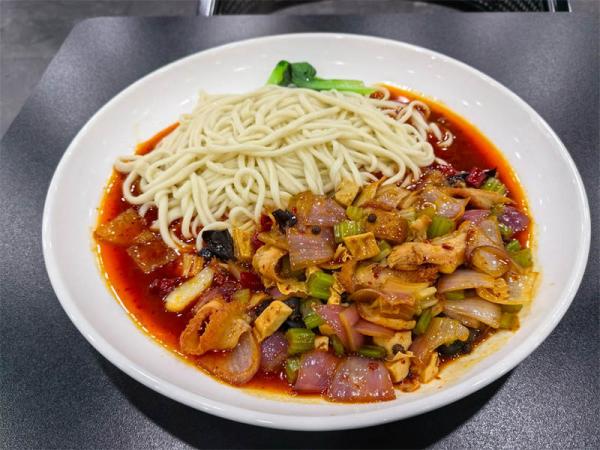
1. Biang Biang Noodles
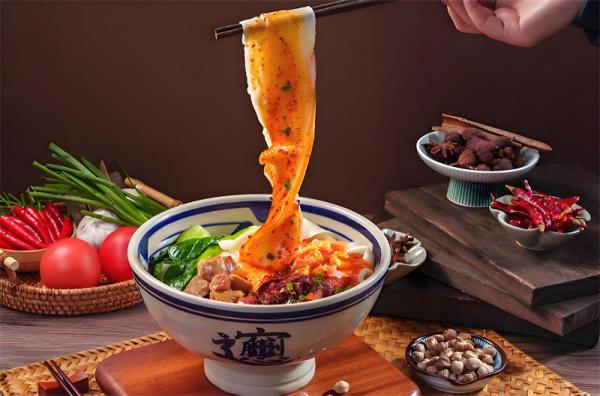
This is one of the top 10 Chinese noodles. The biang biang noodles character is extraordinarily complex, particularly the “biang” character in Chinese, with 56 strokes and even untypeable on computers. More than just a tongue-twisting name, Xi’an biang biang noodles deliver drama from prep to plate.
Watch the making process of this type of Xi’an noodles, you cannot help but marvel at the chef's skill. The dough is rolled into large sheets, cut into wide strips, then flung rhythmically through the air with a distinctive "biang biang" sound—the origin of its name. Biang biang noodles are usually topped with scallions, garlic, and chili powder, and mixed with soy sauce and vinegar for a better taste.
>> Read more about Xi’an food and restaurants
2. Liangpi
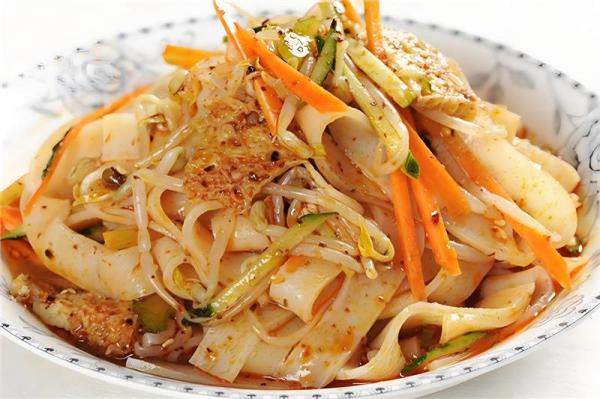
As a famous snack to try in China’s Xi’an, Liangpi, also called cold skin noodles, has gained nationwide fame for its unique flavors and is not to be missed for any China Xi’an tour. Categorized by ingredients, it divides into rice-based (mi pi) and wheat-based (mian pi) types. Xi’an Liangpi noodles delights with its flavor diversity: the distinctive Sichuan-style ma-la, refreshing sweet-sour variations, and locally beloved fragrant-spicy versions. Also, Liangpi is particularly mouthwatering when paired with prepared chili oil, bean sprouts, and celery.
3. Minced Pork Noodles
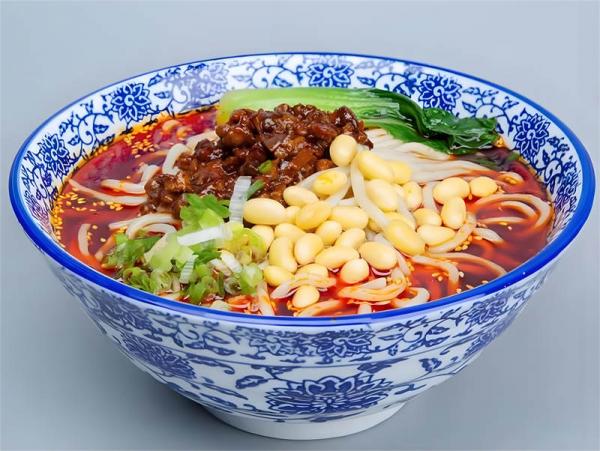
Minced pork noodles, also called Saozi noodles, are one of the most famous old Xian noodles. The most authentic version comes from Qishan County of Baoji City in Shaanxi. This dish requires ample broth with fewer noodles, emphasizing sour-spicy flavors, typically using leek-leaf-width noodles.
A secret of the tasty Saozi noodles is that a small amount of alkaline has been added to the dough to ensure clear broth and non-sticky noodles. The noodles are cooked in a large pot. The broth tastes sour and spicy, while the noodles remain pleasantly chewy and refreshing. Saozi noodles exemplify the depth of flavor in Xi’an noodles, and no wonder people of all ages love them.
>> Recommended half-day Xi'an evening food tour
4. Oil Splashed Noodles
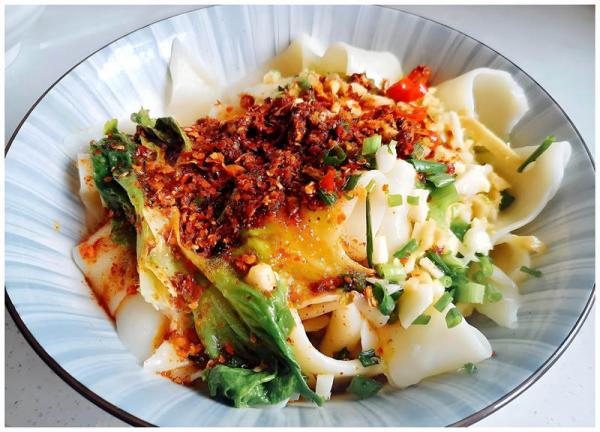
Xi'an oil splashing noodles is also a must-try for your food tour of Xi’an. This famous Xi’an food stands out for its layered texture. Particularly, every strand of noodle is delightfully chewy after being soaked in fragrant and spicy broth.
When sizzling hot oil is poured over the noodles, you'll hear the crackling sound of oil and smell the intoxicating aroma of fiery chili and toasty sesame. Paired with tender vegetables and cilantro, the oil-splashed noodles taste so great that it’s impossible to stop after just one bite.
5. Hele Noodles
Hele are a famous Xi’an noodles made of buckwheat flour, and it is honored as one of the "Three Wonders" of northern Chinese noodles alongside Lanzhou hand-pulled noodles and Shanxi sliced noodles. To make the hele noodles keep their delightful taste and enticing aroma, precise amounts of salt and alkali are added when kneading the dough.
The prepared dough is loaded into a traditional héle press, where it’s extruded through fine holes, transforming into perfectly even strands that plunge straight into a bubbling cauldron. When paired with rich toppings like minced lamb sauce, the noodles taste pleasant.
6. Spinach Noodles
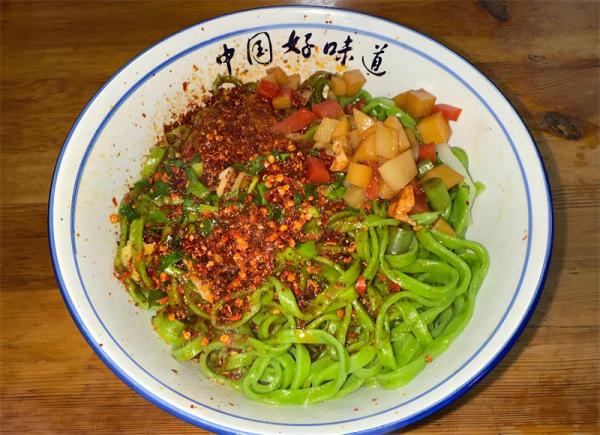
Spinach noodles are also one of the best Xi’an noodles. It has the fresh aroma of spinach juice perfectly infused into the noodles, tasting chewy and smooth. When topped with chili oil, vinegar, scallions, minced pork, or tomato-egg sauce, the flavor becomes absolutely incredible.
To make spinach noodles, the preparation begins by pureeing fresh spinach into emerald-green juice. Then use the spinach juice to replace part of the water when kneading the flour into the dough. Roll the dough into thin sheets and cut into either thin or wide noodles before boiling. The cooked spinach noodles display a vibrant green color that looks extremely appetizing.
>> Recommended 3-day Xi’an highlight tour
7. Dipping Noodles
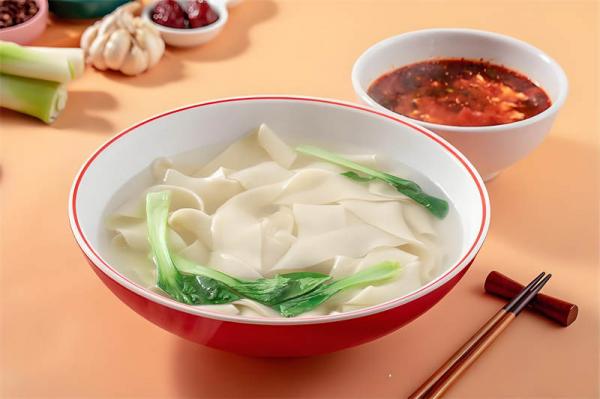
Yangling dipping noodles from Xi'an have been listed as an intangible cultural heritage. Its uniqueness lies in serving the broth and noodles separately - diners pull the plain noodles from the bowl into the flavorful broth when eating.
These classical Xi’an noodles are often served with leafy vegetables like spinach, alfalfa, or pea shoots. The wide belt noodles, about 3-5cm wide, 1.5m long, and 2-3mm thick, appear snow-white when coiled among the greens. If you want to try something special when traveling in Xi’an, this is for you.
8. Baitang Noodles
Huxian County (now Huyi District of Xi'an) treats visitors with a distinctive noodle dish called "Baitang noodles" (swing-soup noodles). As a rising star among Xi’an noodles, it was developed and improved by modern Huxian people based on Qishan Saozi noodles.
Unlike other Saozi noodles, where broth is poured over noodles, Baitang noodles present a unique scene: a bowl of noodles and a bowl of soup are served separately. When eating, you need to pick up a small amount of noodles from the noodle bowl, swing them in the soup bowl to dip and absorb the flavors, and then enjoy the noodles.
>> Recommended 4-day Xi’an discovery tour with local food
9. Liuxiang Noodles
Liuxiang noodles in Xi'an attract the locals a lot. It sounds like a back-alley eat, and its specialty lies in the unique minced meat topping and seasonings. The topping is typically made by stir-frying various meats like beef and pork with vegetables.
Mixing the noodles well is also very important. Each deliberate turn of the chopsticks ensures optimal sauce distribution. Keep mixing while eating - it tastes better this way.
>> Discover the 43 most popular Chinese foods everyone should try
10. Xi'an Style Hand-Torn Noodles with Braised Pork

In Xi'an, spiced braised pork (La Zhi Rou) is an indispensable culinary element, famously used in Rou Jia Mo. Its pairing with hand-torn noodles (Jiu Mian Pian) is also highly popular.
The pork is stewed for over ten hours with various spices until fork-tender. The resulting meat is intensely flavorful, melt-in-your-mouth tender yet not greasy. The hand-torn noodles achieve a soft, silky texture that requires precise kneading strength - too little makes them limp, while too much makes them tough. Paired with the unique braised pork, chives, and tofu, these Xi’an noodles taste awesome.
Recommended China Food Tour to Xi’an